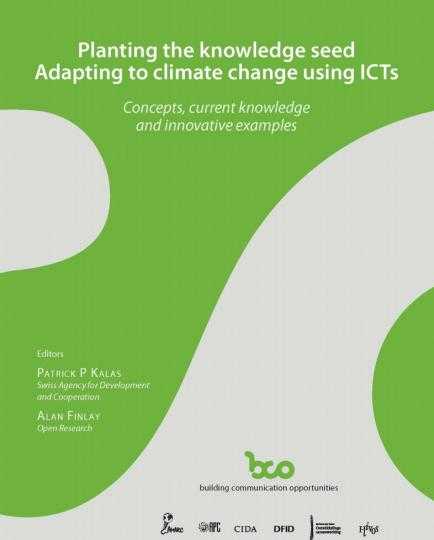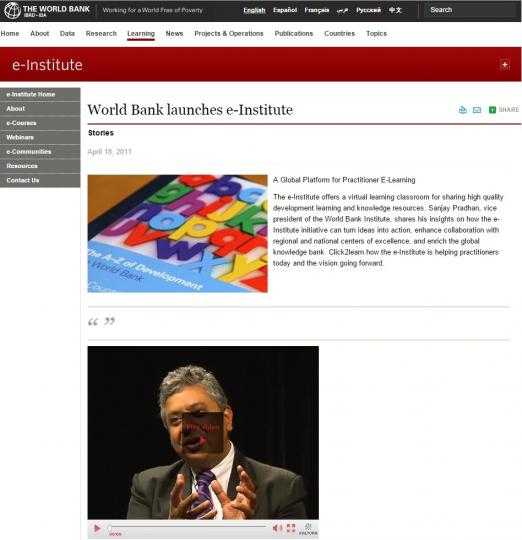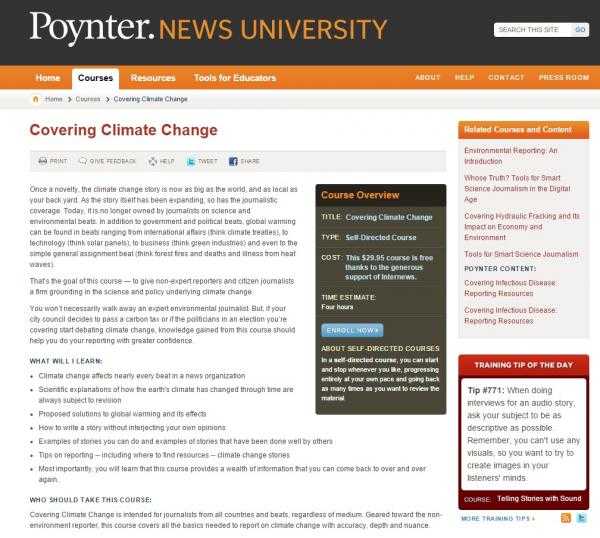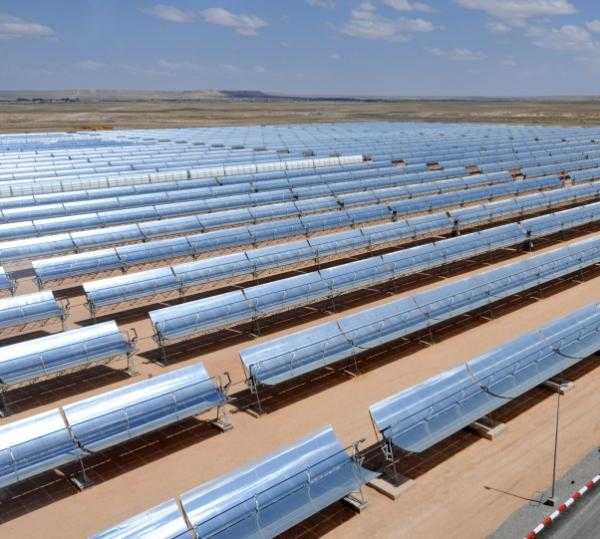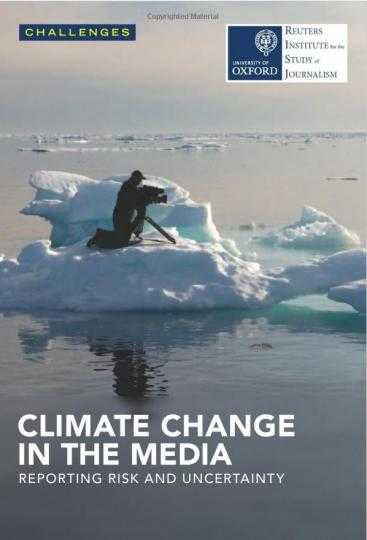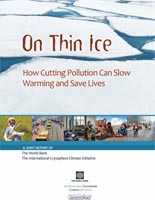The publication takes you on a journey to explore the practical linkages between climate change, access to and sharing of information and knowledge, communication for development and ICTs in general. More specifically, it considers how everyday information and communication tools such as radios, mobile phones, personal computers, the internet and interactive media can help reduce the risks of climate change faced by the most vulnerable segments of the global village through providing access to and the sharing of timely information and critical knowledge.
A focused look at next-generation sustainable materials innovation from the folks at PopTech.
The e-Institute offers a virtual learning classroom for sharing high quality development learning and knowledge resources.
From our friends at Earth Journalism Network and Poynter. News University.
This is an Internews and Internews Europe project dedicated to the empowerment of environmental journalists from developing countries around the world.
This report describes organized attacks on climate science, scientists and scientific institutions like the UN Intergovernmental Panel on Climate Change (the IPCC), that have gone on for more than 20 years. It sets out some of the key moments in this campaign of climate denial started by the fossil fuel industry, and traces them to their sources. The tobacco industry’s misinformation and PR campaign in the US against regulation reached a peak just as laws controlling tobacco were about to be introduced.
Scientists and politicians are increasingly using the language of risk to describe the climate change challenge. Some researchers say stressing the ‘risks’ from climate change rather than the ‘uncertainties’ can create a more helpful context for policy makers and a stronger response from the public. But understanding the concepts of risk and uncertainty – and how to communicate them – is a hotly debated issue. In this book, James Painter analyses how the international media present these and other narratives around climate change.
This book responds to a very real need in African journalists’ reporting of the complex phenomenon of climate change. Climate change poses a clear danger to lives and livelihoods across Africa. Journalists there have critical roles to play in explaining the cause and effects of climate change, in describing what countries and communities can do to adapt to the impacts ahead, and in reporting on what governments and companies do, or do not do, to respond to these threats.
Climate change is happening faster and in a dramatically more visible way in the Earth's cryosphere than anywhere else on earth. Cryosphere is defined as elements of the Earth system containing water in its frozen state. The average temperature has risen here at over twice the global mean in the Arctic, Antarctic Peninsula, and much of the Himalayas and other mountain regions. This report summarizes the changes already being observed in the following five major cryosphere regions: the Andes, Antarctica, Arctic, East African Highlands, and the Himalayas.

Our initiative to green the film industry has a dual purpose: To reduce the environmental impact of film production — making a movie, especially a blockbuster, produces massive amounts of greenhouse gas emissions; and to spread climate change messages through cinema.
<p style="text-align: center;"><a href="/sites/default/files/images/Film4Climate-Fold-Out-Flyer-v8.png"><img alt="" src="/sites/default/files/images/legacy/Film4Climate-Fold-Out-Flyer-v8.png" /></a> <img alt="" src="/sites/default/files/images/legacy/Film4Climate-flyer-2.jpg" /></p>
<p style="font-size: 13.008px; line-height: 20.0063px;">[video:https://vimeo.com/126955037]</p>
<p>To do this, we’ll spend the next few months establishing <strong>a network of knowledge partners </strong>representing the industry’s practitioners and associations (e.g. Film Institutes, Film Commissions, Studios, Production Companies, and International Film Festivals). The partners will work together to share insights, experiences, and practical tools to achieve the goals.</p>
<p>We aim to share the results with an international audience during events taking place at the United Nations Climate Change Conference (COP21) in Paris, France, from November 30 - December 11. </p>
<p>Several excellent templates have been devised by Studios in the USA and Europe along with <strong>self-regulating, free software that allows producers to establish the projected carbon footprint</strong> for the production of the upcoming venture, based on scripts, breakdowns, and schedules. Signing up for the program allows the subscriber to enter the actual data during the production to learn if it is possible to reduce the overall carbon footprint by the end of the process.</p>
<p>Connect4Climate has discussed this idea at previous film festivals and events: <a href="http://connect4climate.org/initiative/film4climate-announced-berlinale&…; target="_blank">We announced it at the Berlin International Film Festival</a>, and discussed it at the Stockfish European Film Festival in Reykjavik, Iceland, at the <a href="http://connect4climate.org/event/how-film-industry-taking-climate-chang…; target="_blank">Guadalajara Film Festiva</a>l, the largest festival in Latin American, and most recently at <a href="http://connect4climate.org/event/entertaining-climate-action-%E2%80%9Cc…; target="_blank">a screening of Chloe & Theo at the World Bank Group headquarters</a>. Now, we go to the south of France to the Cannes International Film Festival, held from May 13-24 to keep the momentum going.</p>
<p>Cinema plays a fundamental role in directing <strong>massive attention to social issues and shifts in thinking</strong>. Recall Erin Brockovich, Hotel Rwanda, Blood Diamond, or Syriana. Films can also mobilize people to demand change themselves. Think Norma Rae and Philadelphia.</p>
<p>Just as important, the film and entertainment production industry employs millions and traditionally consumes vast amounts of energy and resources with productions around the world. We think it’s time for a <strong>global creative and influential alliance to tackle the climate crisis.</strong></p>
<p>This year is a pivotal one for people and the planet: two crucial UN processes will conclude later this year: the<a href="https://sustainabledevelopment.un.org/topics/sustainabledevelopmentgoal…; target="_blank"> Sustainable Development Goals</a> and the <a href="http://newsroom.unfccc.int/" target="_blank">COP21 climate change negotiations in Paris, France</a> – and we’re preparing now by, in part, <strong>kicking our Flim4Climate initiative into high gear</strong>.</p>
<p>The upcoming Paris COP 21 climate negotiations aim to achieve a legally-binding global agreement to accelerate climate action, and are already generating momentum and serious attention. To capitalize on this, the World Bank Group Connect4Climate program is joining forces with high-profile partners <strong>to encourage the film and entertainment industry to take action on climate change</strong>.</p>
<p>The Action4Climate youth competition challenged filmmakers from around the world to tell their climate change story - see the inspiring winning entries on <a href="http://www.action4climate.org/" target="_blank">action4climate.org</a></p>
